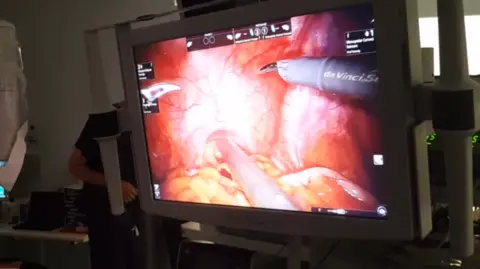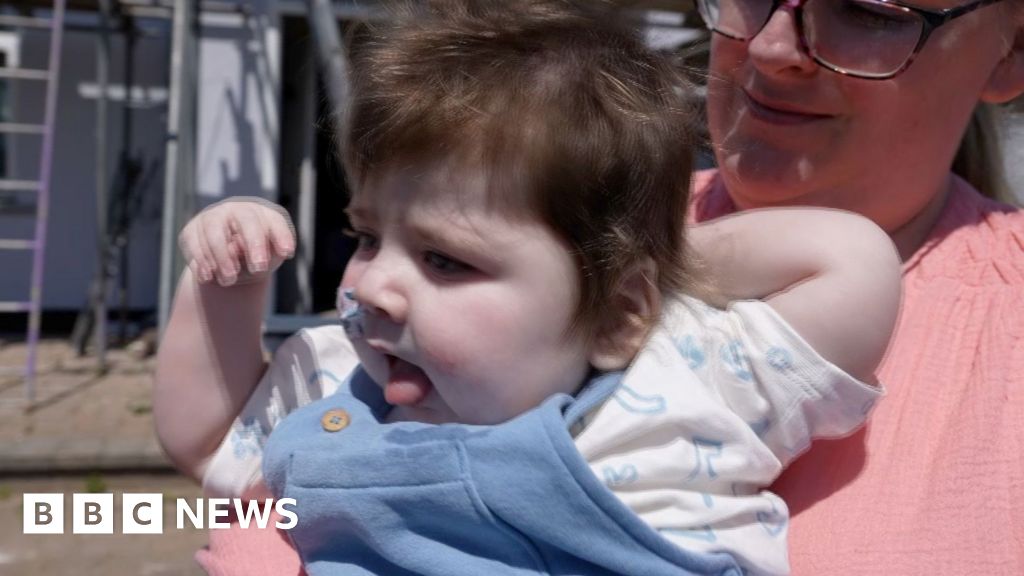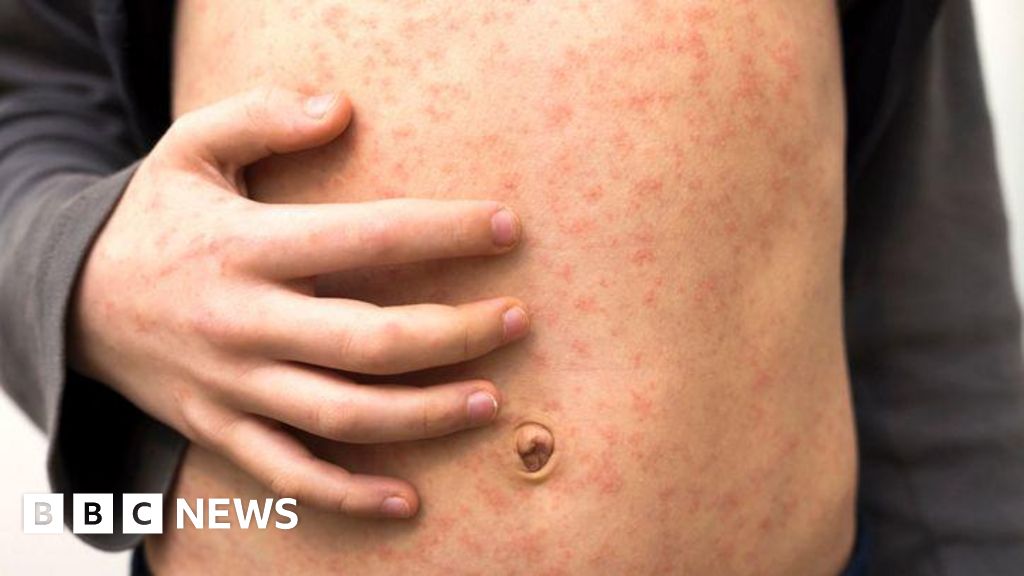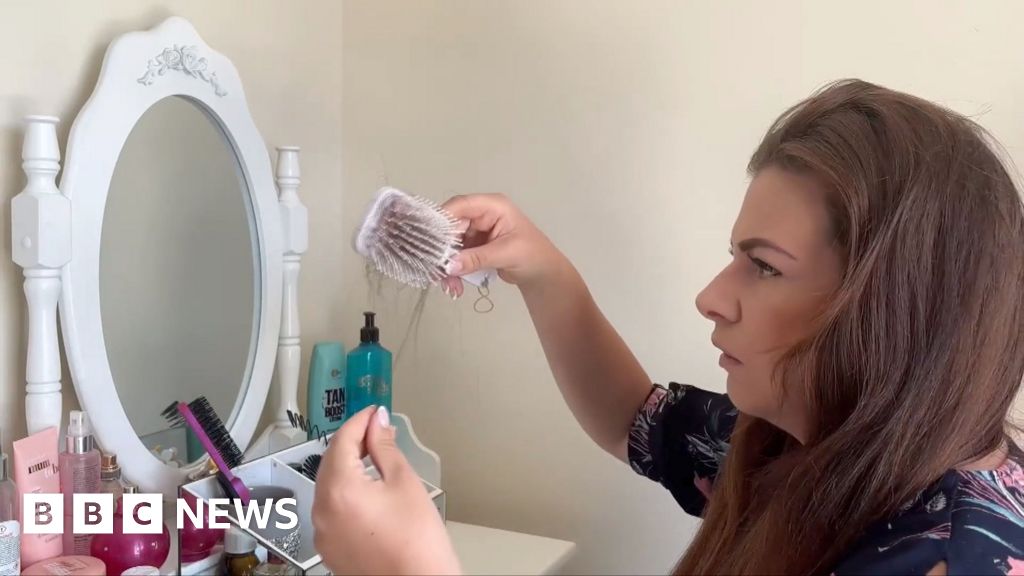ARTICLE AD BOX
5 hours ago
By Aurelia Foster, Health reporter, BBC News

 Cancer Research UK
Cancer Research UK
A special light is shone on to the prostate, which makes the cancer cells show up
A special type of fluorescent dye might help surgeons better locate and remove prostate cancer cells, UK scientists from University of Oxford believe.
Getting rid of all of the cancer is vital to cut the risk of it coming back.
The glowing dye attaches to a protein found only on the cancer cells.
In a small, early trial on 23 men, surgeons say it helped them find areas of cancerous tissue not picked up by the naked eye or other clinical methods.
A larger trial is now planned, funded by Cancer Research UK (CRUK).
In some of the 23 men having prostate cancer operations, surgeons spotted cancer cells that had spread to nearby tissue and lymph nodes, which they say they may have missed with conventional methods.
This is the first time this method has been tested on humans in the UK, with the findings now published in the European Journal of Nuclear Medicine and Molecular Imaging.
A larger trial, called the Promote study, will further test how effective this is compared with other approaches.

 Cancer Research UK
Cancer Research UK
David Butler volunteered to be one of the first to try the dye method being used by the Oxford team
'Promising'
Lead researcher Prof Freddie Hamdy told the BBC it was too early to know if it would work on every patient, but that it was "promising".
"In many patients, we saw cancer that we would not have seen otherwise," he said.
"It’s the first time we’ve managed to see such fine details of prostate cancer in real-time during surgery," Prof Hamdy said.
“With this technique, we can strip all the cancer away, including the cells that have spread from the tumour which could give it the chance to come back later. "
"Equally important is cancer we don't see," he added.
Prof Hamdy believes the method will mean more healthy tissue can be preserved in surgery, reducing the chance of side effects that can sometimes happen following prostate operations, such as erectile dysfunction and incontinence.
'Very lucky'
David Butler from Bradford, West Yorkshire took part in the trial.
"It did locate cancer that was in my lymph nodes and also my bladder," he said.
He had a course of radiotherapy after his surgery and has since been clear of cancer.
"I count myself as very lucky," he said.
Prostate cancer is the most common cancer in men in the UK, with about 52,300 new cases every year.
Dr Iain Foulkes, executive director of research and innovation at CRUK, said: “We need better tools to spot cancers which have started to spread further. The combined marker dye and imaging system that this research has developed could fundamentally transform how we treat prostate cancer in the future."
CRUK hopes that if the trials go well the dye could be adapted to use in surgery for other types of cancer too in the future.

 11 months ago
39
11 months ago
39








 English (US) ·
English (US) ·